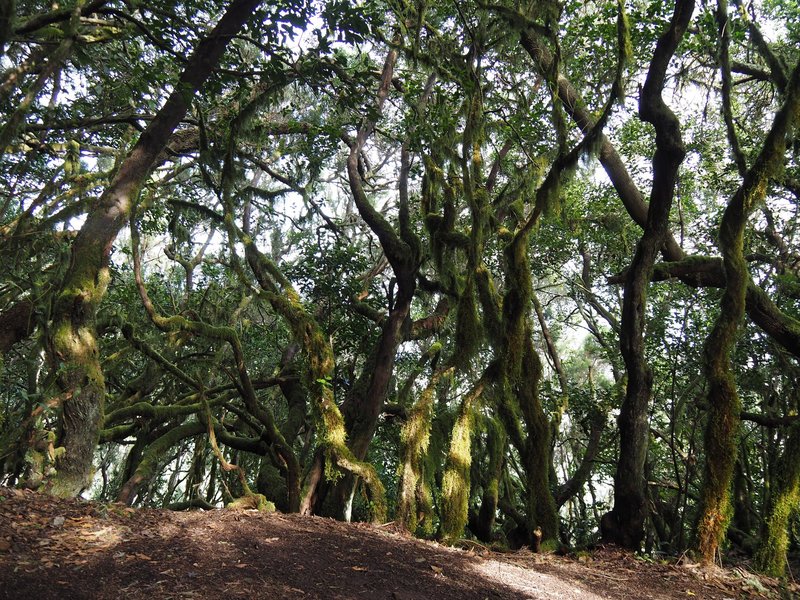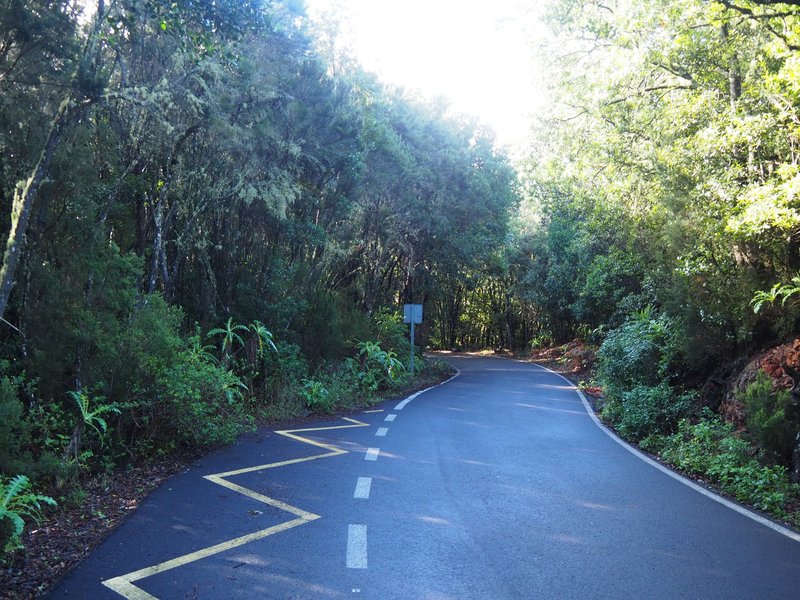As mentioned in the introduction to this website's page, I'm surprised by the lack of interest in Garajonay National Park, as I personally found it extraordinary from a geological and botanical perspective, as well as thanks to the warm welcome of the local people. A true discovery.
We stayed in a charming hotel in San Miguel on the island of Tenerife. The plan was simple: just take the local bus to Los Cristianos and then catch the ferry to La Gomera. As mentioned before, the ferry trip is expensive: around €40 per person, but it's pleasant because you discover the island from a distance and at a leisurely pace. And you get to know the locals.
Once we got off the boat in San Sebastian, we rented a car to drive straight to Hermigua in the north of the island. Yes, as other WHS members have said, as soon as you leave San Sebastian on a road with a 45° incline, if I may say so, the scenery quickly becomes spectacular. We also stopped at the viewpoints because it was so magnificent.
We had booked a room in another charming hotel in Hermigua. We had followed the advice of the Guide du routard : Hermigua is a good starting point for hiking.

We chose to do a loop following the marked paths ns P8, P11, 37 and P2, so as to do the loop in one day with a picnic stop at the El Cedro campsite. There's a map of the island that I bought before leaving; it's quite detailed and very useful, showing the trails. It's the Kompass map, at a scale of 1:30,000. The starting point is the Degollada del Bailadero parking lot. Be aware that the parking lot is really small, so it's best to leave early. The footpath initially follows a paved road down into the Barranco d'El Cedro, then climbs the opposite slope past the campsite to forest road 37, which loops back to the paved road where we started. Trail P2 enters the park proper. And here, don't confuse Jurassic Park with Garajonay National Park! A
Amidst the tree ferns, succulents, and moss-clad trees, the only thing missing was the dinosaurs. The trees are truly spectacular: immense, dark, and gnarled, as if Walt Disney himself had come here before designing Snow White's enchanted forest! (See the introductory photo). It must be said that this is an ancient Tertiary-era forest.
We took a second day hike the next day in the north of the island, from Hermigua to Casas de la Caleta where a black pebble beach has been developed with views of the island of Tenerife and a sea so wild that it would be better not to swim in it. Part of the path is unsafe and dangerous. There was no one there except for two emaciated black cats and a daredevil in a swimsuit. No one whistled at us during the journey, which is ironic; we had to go to San Cristobal de la Laguna, on Tenerife, which is also a World Heritage Site, to hear the Silbo, whereas it's the one from La Gomera that's listed as UNESCO Intangible Cultural Heritage ! San Cristobal de La Laguna in winter 2023. However, along the way, we were able to observe the Laurel Pigeon, endemic to the island. It's worth noting that on the island of La Palma, the great raven, also endemic, is not at all shy and allows you to approach, but beware, it will quickly steal your lunch!

We stayed several days on the island, changing hotels once in Playa de Santiago in the south, where we also took a walk along trail no. 22. This trail, which is outside the park, took us to Antoncojo, from where we turned back. Then we concluded our stay by doing what the other WHS visitors did: we went to the Juego de Bolas visitor center, a small but interesting museum because you discover how hard life must have been for the Guanches on the island. On my way there, it was the first time in my life I'd seen wet asphalt when it wasn't raining. (The photo) This is how you understand, because you see it in real life, how the island's vegetation feeds on water with the trade winds laden with moisture and, consequently, why the laurel trees have evergreen leaves!

We continued our journey like Solivagant until we reached the extraordinary Mirador de Abrante (The photo) at the very north of the island with breathtaking views of the volcano of the island of Tenerife, El Teide, also classified as a natural heritage site of UNESCO. El Teide in winter 2023.
Finally, it's worth noting that approximately one-third of the surface area of La Gomera is classified as a biosphere reserve. In conclusion, I only have one onomatopoeia to say: Wow! And how many stars does a Wow deserve? The maximum?
More on
Comments
No comments yet.
